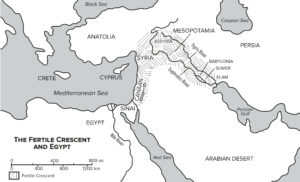Putting the Bible on the Map, James Fleming, Biblical Archaeology Review (9:6), Nov/Dec 1983.
An understanding of geography is essential to an understanding of many sections of the Bible. For this reason, an up-to-date atlas—maybe more than one—is a tool no serious student of the Bible can be without.
There are at least four reasons why geography is important. First and perhaps most significant, the Biblical materials cannot be accurately studied apart from their time and place—their history and geography. Some great literature can be, but the Bible is not this type of literature. Both the Old and the New Testaments are rooted in a storied place—a land that holds memories of God’s dealings with his people. For the Israelites there was no timeless space or spaceless time. The God of Scripture was the Lord of places as well as times. Biblical theologians correctly point out that the Bible is not simply abstract theologizing about God. The Bible is the story of God acting in a covenant relationship with Israel.
Read the rest of Putting the Bible on the Map in the online Biblical Archaeology Society Library,





Um excelente artigo que trouxe luz para um velho estudioso das Escrituras Sagradas